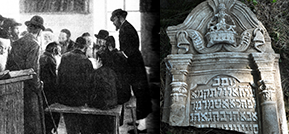Galicia and Bukovina are historical regions in Eastern Europe. They gained their distinct character when Galicia and Bukovina were under the Austrian rule from the late eighteenth to the early twentieth centuries.
The name Galicia (Ger. Galizien) was derived from Halicz (Ukr. Halych), a town which was the center of the medieval Halych-Volynian Principality, initially a part of Kievan Rus'. In the 1340s, the largest part of the Halych principality was included into the Polish Kingdom. In 1772, after the first partition of Polish-Lithuanian Commonwealth, the areas known as Rus Czerwona (Red Russia/Ruthenia) and Lesser Poland were taken by Austria. Together they formed one of the Austrian crown lands under the name the Kingdom of Galicia and Lodomeria. In 1918, Galicia was regained by the independent Polish Republic, although a short-lived West-Ukrainian People's Republic existed in Eastern Galicia in 1918-19. In 1939, Eastern Galicia was annexed by the Soviet Union and became a part of Soviet Ukraine. Since 1991, this area belongs to the independent Republic of Ukraine.
For an in-depth overview of the Jewish history in Galicia see the entry Galicia by Rachel Manekin in the YIVO Encyclopedia of Jews in Eastern Europe.
Bukovina (the name derived from a Slavic word buk, meaning beech tree) was once the core of the Moldavian Principality. In the sixteenth century it came under the suzerainty of the Ottoman Empire. In 1775 it was annexed by Austria; in 1918 incorporated into Romania, and in 1940 it was divided, with Northern Bukovina being annexed by the Soviet Union and now is part of the Republic of Ukraine, while Southern Bukovina remained part of Romania till today.
For an in-depth overview of the Jewish history in Bukovina see the entry Bukovina by Andrei Corbea-Hoisie in the YIVO Encyclopedia of Jews in Eastern Europe.







